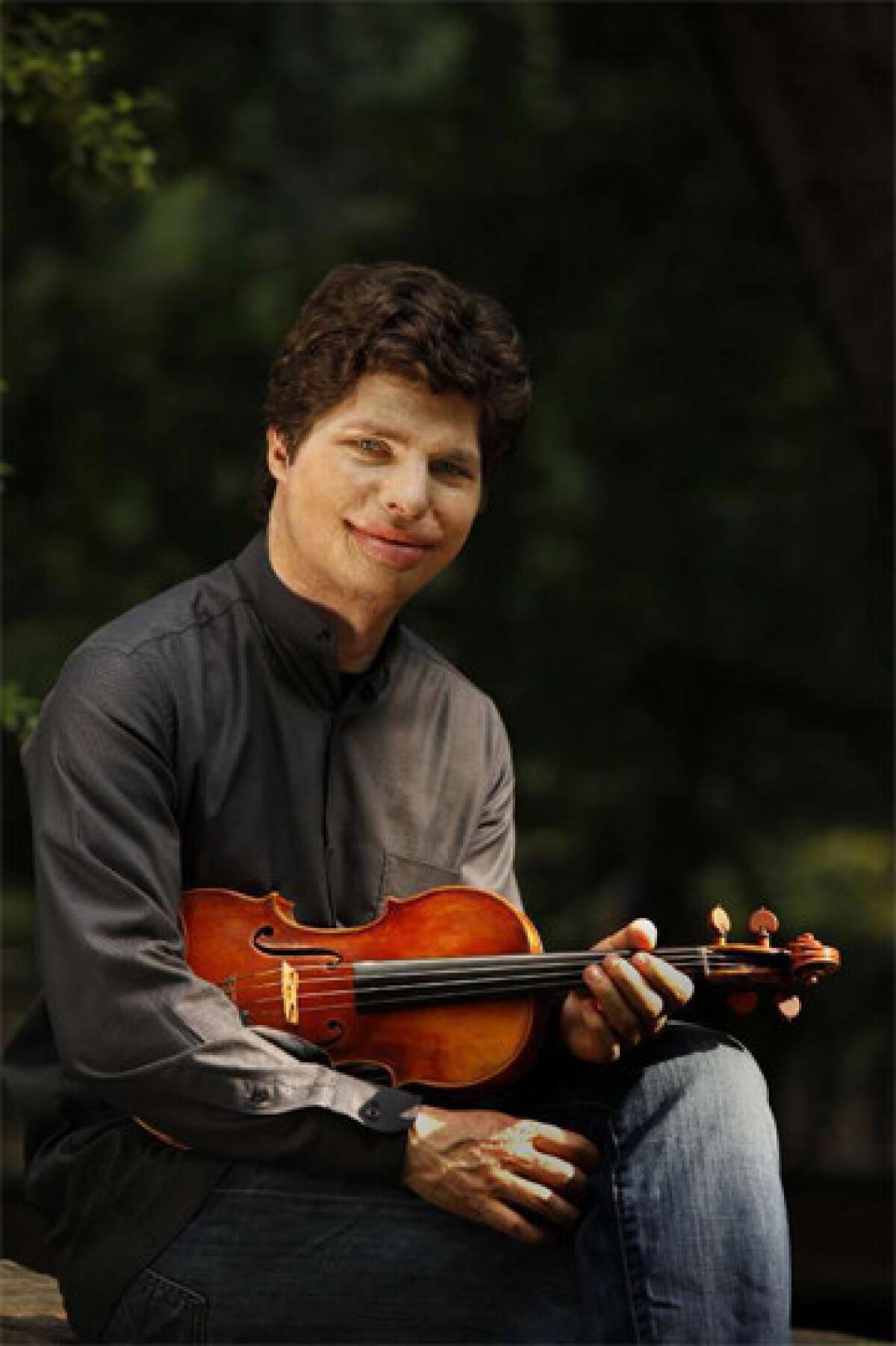Music Review: Augustin Hadelich, Edo de Waart with the L.A. Phil

- Share via
Los Angeles Philharmonic fans were priming themselves for a rare bout with Schoenberg’s formidable Violin Concerto to launch the new year on Friday night — with violinist Christian Tetzlaff and conductor Christoph Eschenbach presiding. But Tetzlaff and Eschenbach both canceled a few days prior, due to illness.
So another violinist, the young, superbly equipped Augustin Hadelich, and a familiar figure from the San Francisco Symphony’s past, conductor Edo de Waart, were rushed into the breach for what became Hadelich’s Walt Disney Concert Hall debut.
Hadelich surely is used to this by now, for these were the same last-minute conditions in which he made his impressive 2008 Hollywood Bowl debut when both the conductor and violinist canceled. And the conductor who canceled then was ... Edo de Waart.
CRITICS’ PICKS: What to watch, where to go, what to eat
Given the scarcity of performers who play the Schoenberg concerto, the program had to be changed, and so, the reliable Beethoven Violin Concerto — with which Hadelich made his Los Angeles Chamber Orchestra debut in 2012 — was substituted.
That, coupled with the previously scheduled Beethoven “Egmont” Overture and Dvorák “New World” Symphony, made Friday’s program look like one of the most, I dare say, shopworn lineups imaginable. On paper, at least.
Yet Hadelich, as he did with the LACO, made the Beethoven concerto sing. His shaping of the opening passage startled with its silvery tone, pinpoint intonation and surprising turns of phrase — and there was not a note thereafter that was not thought out, characterized and beautifully projected. The slow movement was phrased like a deep internal dialogue, the Rondo was vigorous and playful, and De Waart brought out seldom-spotlighted undercurrents in the orchestral parts.
There is a succinct word for a performance like this, “masterly,” and Hadelich topped it off with an equally eloquent signature encore of his, Paganini’s Caprice No. 9.
For his part, De Waart coaxed a markedly different sonority from the Philharmonic — one of almost chamber-like clarity with sharp releases, unusual prominence of winds and plenty of breadth — right from the start of “Egmont” and all the way through the “New World” Symphony.
It wasn’t a revelatory “New World” — not like Eschenbach’s roller-coaster ride here in 2009 — yet it was fluid, forceful, rhythmically alive.
More to Read
The biggest entertainment stories
Get our big stories about Hollywood, film, television, music, arts, culture and more right in your inbox as soon as they publish.
You may occasionally receive promotional content from the Los Angeles Times.










